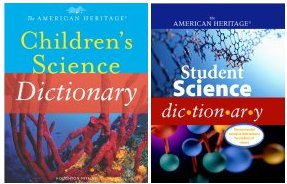Sweet, Sticky Science Additional Information
Recommended Web sites:
You can read about Cornell University’s sugar maple research program at www.cornellmaple.info(Cornell University).
To learn about the life of a sugar maple tree, see maple.dnr.cornell.edu/pubs/trees.htm(Cornell University).
You can read about recent research on syrup at www.uvm.edu/theview/article.php?id=1949 (University of Vermont).
Find information about maple syrup and links to other Web sites at woostercenter.osu.edu/gary/maple-syrup (Ohio State University).
LabZone
Test a Dandelion for Latex
http://www.sciencenewsforkids.org/articles/20060405/LZActivity.asp
Books recommended by SearchIt!Science:
![[book]](https://www.sciencenewsforstudents.org/wp-content/uploads/2019/11/a1406_b1489.jpg) |
From Maple Tree to Syrup (Start to Finish)
Published by Lerner Publishing, 2004.
You probably know that maple syrup comes from maple trees, but do you know how the syrup is produced? With color photographs, this book offers a simple explanation of the production of maple syrup. See the sugar bush growing, the workers drilling holes in the trees, and the sap flowing out of spouts in the trees and into buckets. Then, take a look at the sugarhouse, where the sap is processed and bottled. The next time that you pour maple syrup onto your pancakes, you’ll know how it got from the tree to your table! |
![[book]](https://www.sciencenewsforstudents.org/wp-content/uploads/2019/11/a1406_b2734.jpg) |
Ininatig’s Gift of Sugar: Traditional Native Sugarmaking
Published by Lerner Publishing, 1993.
Since ancient times, the Anishinabe people have told the story of Ininatig, the “man tree.” A family was starving, the story goes, and a maple tree told them how to turn its sap into food that would help them survive the harsh Minnesota winter. Today, Native Americans still tap the maple tree, make syrup, and celebrate Ininatig’s gift. Color photographs follow Porky White and his friends as they tap the trees in the sugar bush and turn the sap into syrup. They construct a camp of tipis (more commonly called tepees) to live in through the weeks of sugar making. After the sap is collected, they build a huge fire and boil the sap. When the sap stops flowing, the entire camp holds a thanksgiving celebration. They know that Ininatig has once again given them the gift. The book includes a word list and a list of books for further reading. |
![[book]](https://www.sciencenewsforstudents.org/wp-content/uploads/2019/11/a1406_b3195.jpg) |
How Sweet It Is (and Was): The History of Candy
Published by Holiday House, 2003.
What was candy like before people learned to refine sugar? Would you like to attend a banquet where the plates and goblets were made of sugar? Where does chocolate come from? How has technology changed candy? Find the answers to these candied questions, and more, in this illustrated history of candy. Cartoons accompany the text, which begins with the use of sugarcane in India. Learn about maple sugaring, the history of chocolate, early American “penny candy,” and the accidental invention of fudge. If your sweet tooth is ready to nibble by the end of the book, a few recipes are appended. The book also includes a time line of candy history. |
Power Words
evaporation The change of a liquid into a vapor when the liquid is below its boiling point. Puddles dry up and disappear because of evaporation.
sap The liquid that flows through plant tissues and carries water, minerals, and food.
sugar 1. A type of carbohydrate that forms crystals that taste sweet and can dissolve in water. Glucose and sucrose are sugars. 2. Sucrose that is purified and used to sweeten food.
sugar bush An area of a forest that contains maple trees and is used to produce syrup.
Copyright © 2002, 2003 Houghton-Mifflin Company. All rights reserved. Used with permission.
